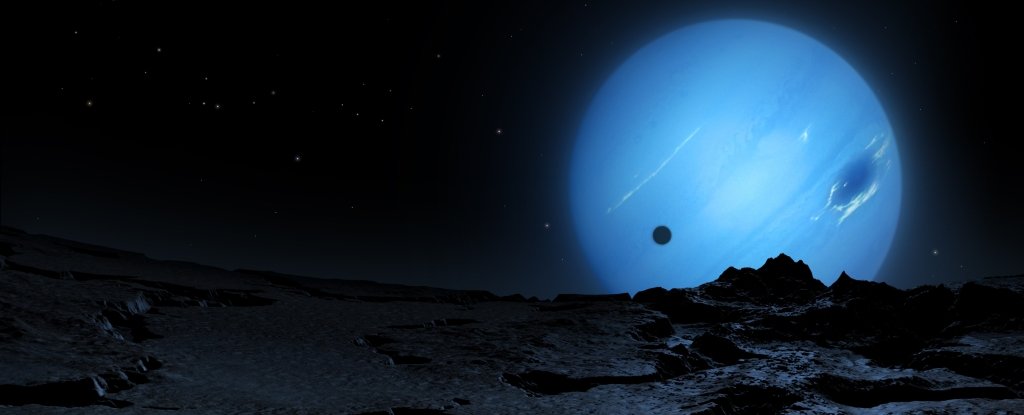
A project to map dark energy in the southern sky has brilliantly exceeded its parameters. It turns out, the Dark Energy Survey has also been adept at identifying really small objects all the way out past Neptune.
In its first four years of data, astronomers have successfully identified 316 minor planets, 139 of which are totally new.
The discoveries were made after an intensive re-analysis of said data, using new techniques that could help to find more minor planets in the far reaches of the Solar System, scientists say. They might even aid in the search for the mysterious Planet Nine, thought to be lurking out there in the dark.
The Dark Energy Survey itself is officially over. It ran between August 2013 and January 2019, collecting five and a half years' worth of infrared and near-infrared data on the southern sky. It was studying a range of objects and phenomena such as supernovae and galaxy clusters to try to calculate the acceleration of expansion of the Universe, thought to be influenced by dark energy.
But the survey's high degree of depth, breadth and precision turned out to be useful for something else: spotting distant minor planets, an object category that includes pretty much anything that isn't a planet or a comet - from asteroids to dwarf planets.
We know there are scads of these bodies out beyond the orbit of Neptune, a distance of around 4.5 billion kilometres from the Sun - 30 times the distance between Earth and the Sun (therefore 30 AU, or astronomical units).
But these trans-Neptunian objects (TNOs) are hard to spot. They're very small, and very far away, and the region they hang out in is pretty dark, so there's not much light for them to reflect.
This is where having something that can perform detailed observations of large swathes of the sky comes in handy.
"The number of TNOs you can find depends on how much of the sky you look at and what's the faintest thing you can find," explained physicist and astronomer Gary Bernstein of the University of Pennsylvania.
Because TNOs move differently from galaxies and supernova remnants, the team had to figure out a way to recover those movements from the Dark Energy Survey data. They started with 7 billion dots above the data's background noise that could be possible object detections.
Then the team excluded objects that were in the same spot on multiple nights, indicating they weren't moving like TNOs. And the next step was to identify grouped objects, to figure out how they were moving. All these steps resulted in a list of around 400 candidates that appeared over at least six nights, and then needed to be verified.
First, the team developed a method of image stacking that sharpened the images to clarify whether the spots were TNOs or glitches.
Then, they used their techniques to look for known TNOs to determine the reliability of their methods. It was very careful and painstaking work, and it paid off. The team identified 316 TNOs - 139 of which had never been published - ranging from 30 to over 90 astronomical units away from the Sun.
And the movements of seven of the new objects are extreme TNOs, with an average orbital distance (or semi-major axis) greater than 150 astronomical units. (For context, Pluto orbits at an average distance of nearly 40 astronomical units.) If these extreme TNOs can be confirmed, they will be among the most distant Solar System objects we have seen.
Together, the 139 new objects add a hefty chunk to the database of around 3,000 known TNOs. So it's a pretty effective way to identify these elusive space rocks.
The researchers will be putting their methods through their paces again. The team has tweaked the detection parameters, and will be applying them to the full 5.5-year Dark Energy Survey observation data; the revised techniques might yield hundreds more TNOs.
With luck, they might even come across evidence for Planet Nine, a large body thought to be orbiting at a distance of around 200 AU. The way some of the TNOs loop around the Sun suggests something large has gravitationally affected their orbit - but so far the hypothesised planet has evaded detection.
"There are lots of ideas about giant planets that used to be in the Solar System and aren't there anymore, or planets that are far away and massive but too faint for us to have noticed yet," Bernstein said.
"Making the catalogue is the fun discovery part. Then when you create this resource; you can compare what you did find to what somebody's theory said you should find."
The research has been published in The Astrophysical Journal Supplement Series.
Read Again https://www.sciencealert.com/more-than-100-new-minor-planets-have-been-identified-out-past-neptuneBagikan Berita Ini















0 Response to "Astronomers Just Found More Than 100 Minor Planets at The Edge of Our Solar System - ScienceAlert"
Post a Comment